Bay Area Chefs Share Their Tips and Tricks for Preventing Food Waste in the Kitchen
Selina Knowles, Communications Coordinator
April 25, 2024
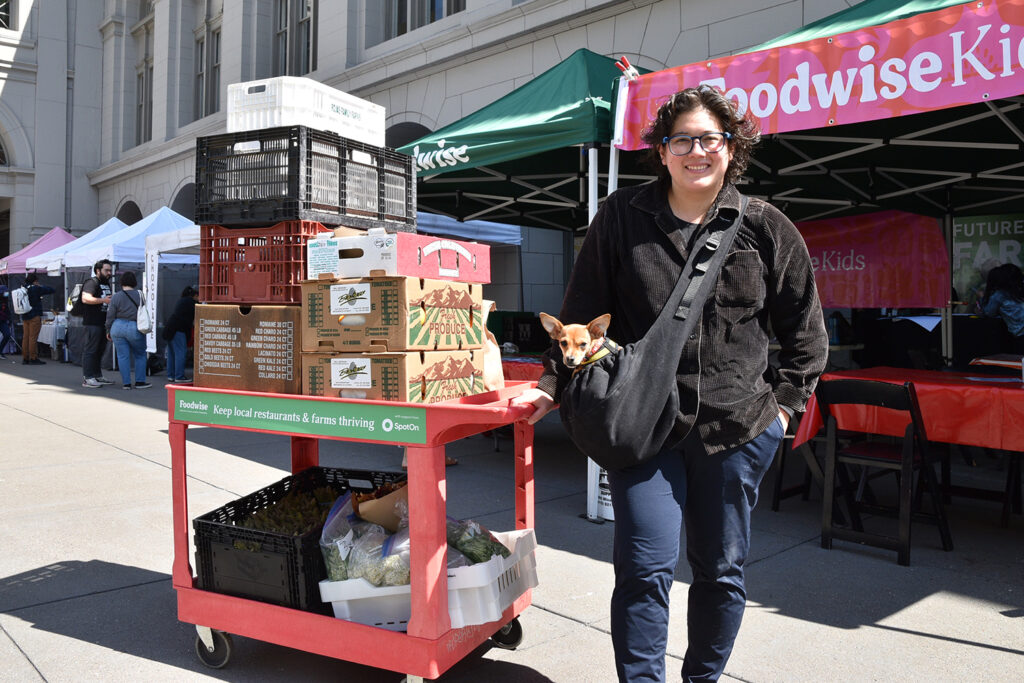
From sprucing up cocktails with fruit-rind infused syrups to repurposing forgotten veggies into hummus, Bay Area chefs have plenty of creative, delicious hacks to prevent and reduce food waste in the kitchen. An estimated 30-40 percent of food is wasted in the United States, much of it during transporting and processing. Shopping at the farmers market is one way to decrease the distance your food travels, and thus the amount that spoils. We can further prevent unnecessary food loss through proper food storage, creative cooking, and a little planning.
“Every item thrown in the compost is literal money and a farmer’s hard work being wasted,” says Gaby Maeda, chef at Friends and Family. “A lot of restaurants make the conscious choice to honor and respect the ingredients they buy, and it’s economically sustainable as well.” To celebrate Earth Month and SF Climate Week year round, take inspiration from a few chefs who regularly shop at the Ferry Plaza Farmers Market as they share tips on upcycling would-be-wasted ingredients.
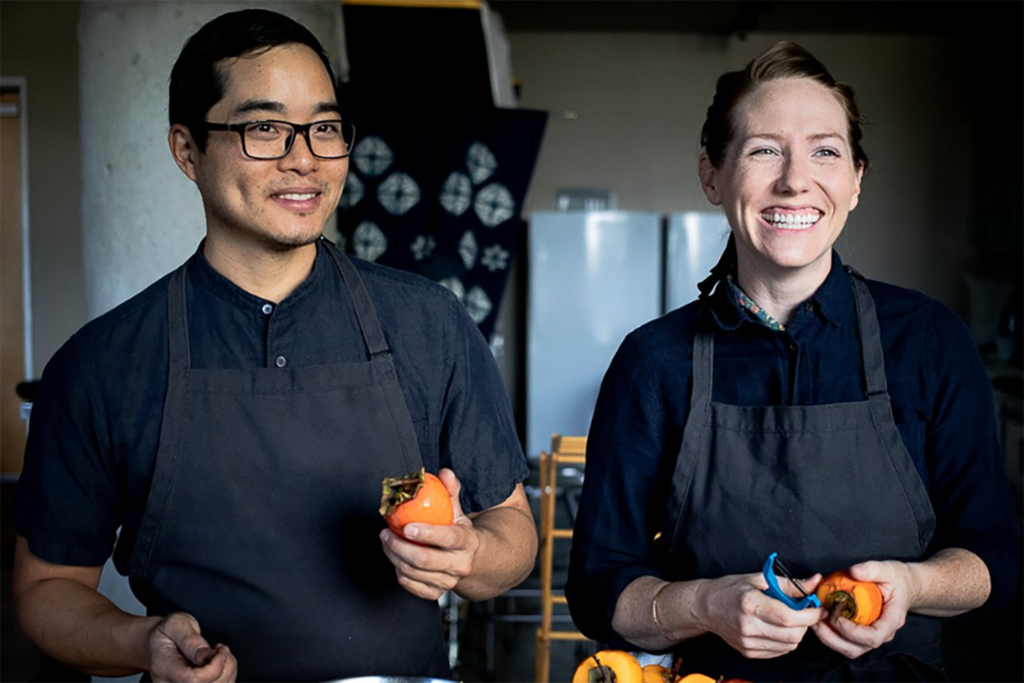
Sun Moon Hospitality: Making Fruit Seconds into First-Choice Jams
Alan Hsu started Sun Moon Hospitality with the intention of passing on knowledge and skills to equip the next generation of chefs. Formerly, he was the chef at Pomet in Oakland when the restaurant earned a Michelin Green Star in 2023 for its sustainable ethos and zero-waste initiatives.
“Food comes from a place, through a person’s hands, with shared resources. It always leads back to the people and the environment. So much time, effort and resources have been already used to produce the food we eat,” says Alan. “In a restaurant or food business, food waste is not only costly financially, it is also demoralizing. From an environmental standpoint, wasting food is equivalent to wasting water, something we in California are well aware of.”
While at Pomet, he made use of the “seconds” (fruit that is blemished, bruised, or imperfect) by making jams or preserves. Alan says that when fruits are overripe and soft, they are sweeter and even better for jam-making. He shares this recipe.

Chef Sarah Germany: Veggie Stems Three Ways
Chef Sarah Germany started her food business to remedy the health problems that she experienced and witnessed while living in East Oakland, and honor Southern food preservation practices. She uses ingredients from the farmers market, including imperfect foods, and excess food from Bay Area school gardens for her medicinal sauces and preserves. You can visit her booth at the Ferry Plaza Farmers Market on Saturdays.
“Wasting food, to me, feels like we are turning a blind eye to those in need and to the land we occupy,” says Sarah. “As an emerging small business, the more we can save on the retail cost of organic produce, simply by doing a little more work to remove a blemish or bruise, the more we create win-win situations for all.”
Sarah shares three creative ways to use the stems of leafy vegetables like chard:
- Sauteed: Remove stems from the leaf, chop them finely, and saute in olive oil with onion, garlic, ginger, and crushed coriander seeds until tender. Place the leaves (roughly chopped or torn) on top and steam.
- Sauerkraut: Remove stems from the leaf, chop them finely, and cover with sea salt. Gently toss until coated, then cover with a cheesecloth or breathable cotton. Wait for the water to appear. Then, using a plate or heavy dish, make sure the stems are covered in their own liquid (any sauerkraut recipe will detail this). After 2 days, strain the liquid, place it in an airtight container and use it to give your tacos and burgers a new attitude!
- Smoothie: Remove stems from the leaf, chop them into even pieces, and freeze and add into smoothies.
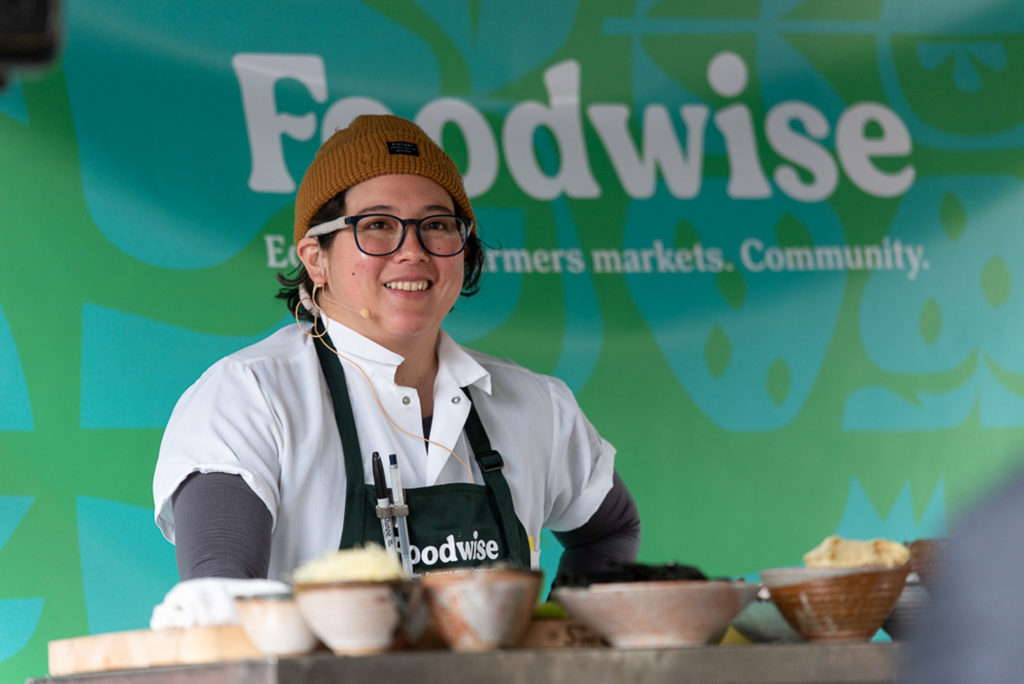
Friends and Family: Sprucing Up Cocktails with Kitchen Scraps
Gaby Maeda is the chef at Friends and Family bar in Oakland. Formerly, she was the head chef at State Bird Provisions. “Having a plan or even an idea for trim or scrap before buying an ingredient is a great practice to reduce food waste,” says Gaby. “It’s a chance to get creative and have fun with the craft of cooking.”
She also stresses the importance of food storage. She suggests using wet paper towels to keep herbs fresh and using breathable containers for ingredients that produce gasses, such as mushrooms and cucumbers.
At Friends and Family, Gaby also works with the owner Blake Cole to transform the trimmings of the kitchen’s produce into components for the bar. “The beautiful thing about the marriage between food and beverages is the ability to extract as many lives from ingredients as possible,” she says. A few examples include using fruit scraps for shrubs or melon or squash seeds and skins for infused spirits or syrups.
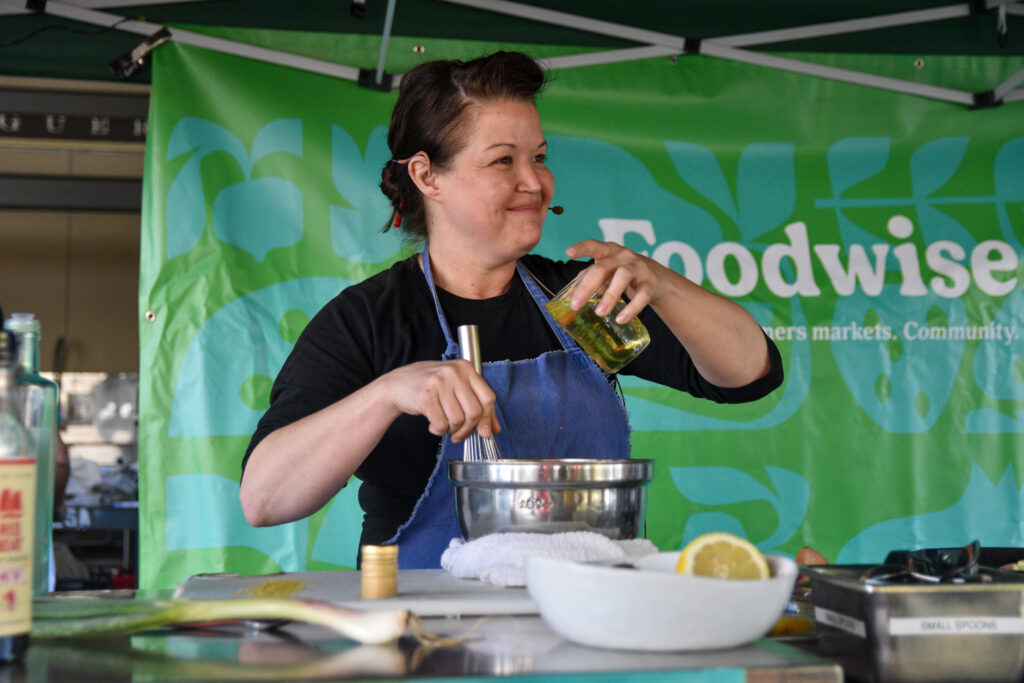
Nightbird: Cultivating a Whole-Plant Mindset
Kim Alter is the chef and owner of Nightbird, a boutique restaurant in the heart of San Francisco. “Buy less, go to the farmers market more,” is Kim’s first thought when asked about preventing food waste.
At Nightbird, Kim creates the entire menu around sustainability. In between each course, there is a bite that utilizes the would-be-wastes from the prior course. “It is important for your finances, for the environment, for teaching the next generation, for teaching your customers, for really everything,” she adds.
Kim teaches her staff to look at a radish, for example, and ask themselves how they can use the whole plant. “Can you make a sauce out of the greens or add them into a salad? Should you cut the radish so there is zero waste instead of a perfect square? Take the time to look at what you are purchasing or cooking and think outside of the box as to how you can utilize the whole piece.”
To save food on its way to the compost, Kim uses the tried-and-true methods of juicing and preserving, and more unique practices of using the juice pulp to make miso and turning some vegetables into “charcoal” (baking them at high heat until they are charcoal), which she uses to give other ingredients a unique smoky flavor. Some scraps also lend themselves as snacks for the rabbit of one of Nightbird’s cooks.
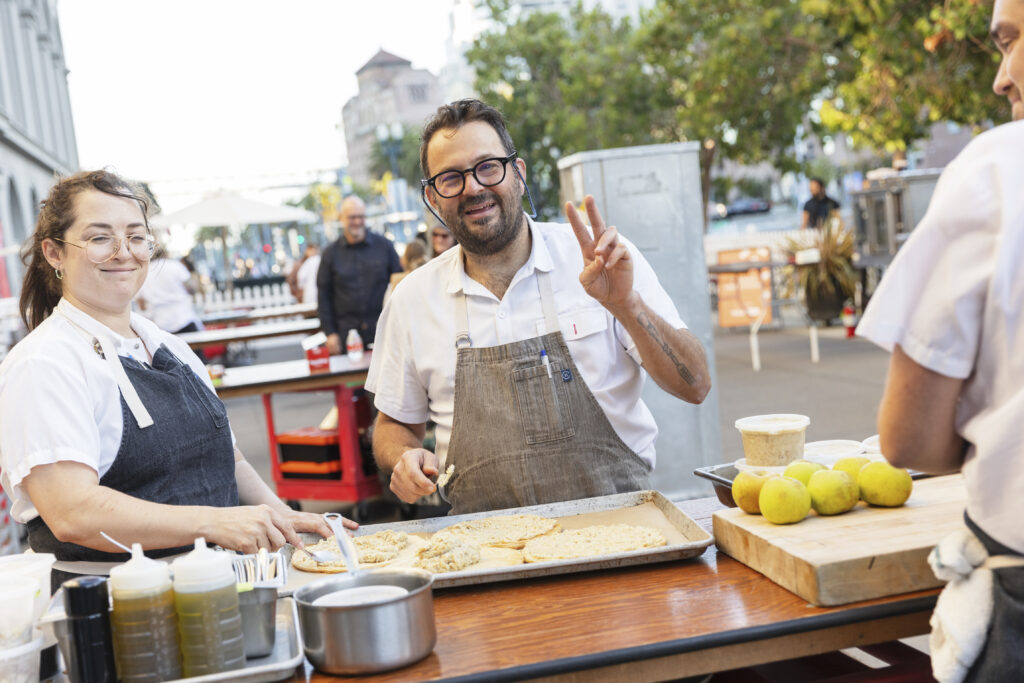
Atomic Workshop Productions: Turning Trimmings into Fresh Sauces and Spreads
Stuart Brioza is the chef and owner of Atomic Workshop Productions, the restaurant group including State Bird Provisions, The Progress, and The Anchovy Bar.
“In our restaurants, the mantra that our chefs learn is that ‘the compost bin can be a missed creative opportunity,’” says Stuart. This brings a broader spectrum of flavors to the menus and is financially beneficial too. “Our bigger picture is that we focus on the life of a seed to its harvestable maturation. Acknowledging this lifespan and the farmers’ work puts an extreme amount of responsibility on us as chefs.”
Stuart shares that when ordering produce from farmers, the restaurant team already has plans for the trimmings of each ingredient. “Every bit and bobble has culinary value when it arrives into the kitchen,” he says. Here are a few of his favorite ways to use excess ingredients:
- Citrus: “Peelings go in a couple of directions for us. All of our mandarins get dehydrated and spun into powders used in a variety of spice blends. Lemons, after juicing, get blanched a few times and then pureed into a smooth sauce, adding back some of its juice. That can be used as bases for aiolis or creamy dressings.”
- Tomatoes: “Beyond canning and preserving, we will blend ripe fresh tomatoes for tomato water. One of my favorite sauces is tomato water mounted with butter and fresh herbs to serve with grilled fish. Another way to use over ripe tomatoes is to box grate the pulp and add a bit of microplaned garlic, salt, pepper, sherry vinegar & EVOO. This makes an incredible à la minute tomato sauce for toast and pastas.”
- Fresh Peas and Favas: “Whatever is leftover from service goes into the next day’s pea or fava hummus—the color lost is brought right back to life!”
Beyond your own kitchen, you can also support climate-friendly eating by dining at restaurants that shop at the farmers market and are committed to reducing food waste.
For more resources, see Foodwise’s 12 Tips for Reducing Food Waste and San Francisco Environment Department’s Food Waste Prevention Tips and Tricks.
Have food waste tips to share? Tag us @foodwise on Instagram, or email .
Topics: Chef, Culinary, Environment, Waste
